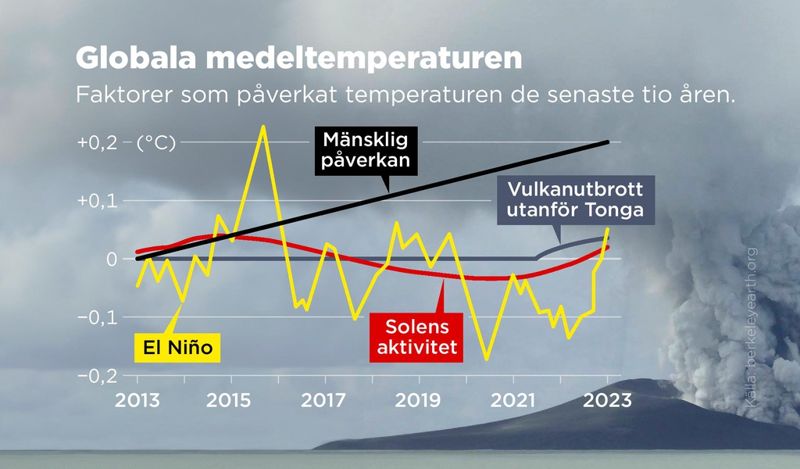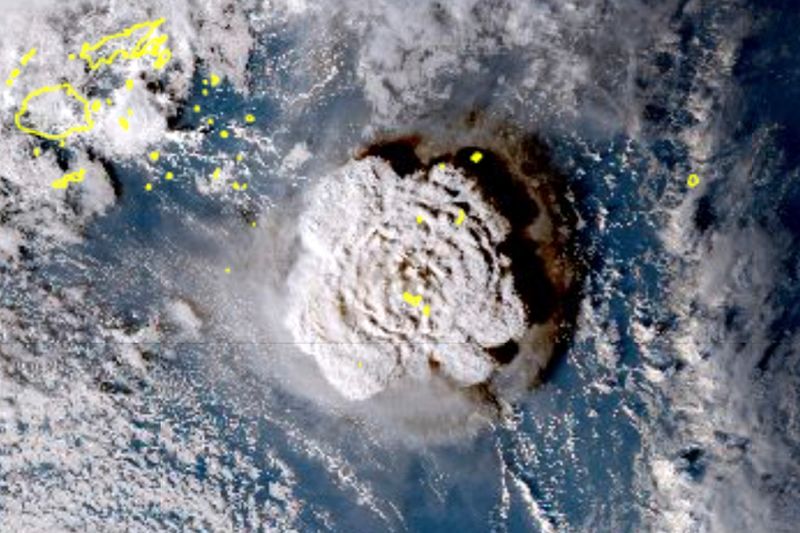In terms of the global average temperature, July was the warmest month on Earth so far. According to the European Union’s climate monitoring service Copernicus, the weather was 0.33 degrees warmer than the previous record month, July 2019. The difference is seen as a significant margin.
Additional factors are needed to reach these peaks, he says Hello CallenOceanographer at the Swedish Hydrological and Meteorological Institute, SMHI.
Not only are the temperatures unusually high on Earth. Surface waters in the world’s oceans were exceptionally warm compared to the average since April. Here too, the distance to the normal curve was unusually large.
– Heat continues at an extreme level, right now, the global average is likely to be as high as it was during the March-April maximum bid, says oceanographer Ola Kalén.
– Globally, it looks really bad because large areas of the oceans have a marine heat wave.
Several factors
Scientists agree that the biggest cause is anthropogenic emissions from burning fossil fuels such as oil, coal and gas. In addition, the naturally occurring El Niño weather phenomenon has given the global average temperature an extra boost.
Some scientists think this is enough to explain the recent high temperatures. Others believe that plug-ins likely had a role in the game, although careful investigations are required to be able to prove anything with certainty.
– Climate warming is the basis, then the El Niño phenomenon is added. Kalin says global warming has a longer time scale and is progressing at a different pace.
– So there must be additional factors to reach the peaks we saw in 2023. Now you are looking for natural and abnormal differences and thinking about how they interact.

Factors that have affected the average global temperature in the past 10 years.
sunspots
Globally, Ola Kalén identified three factors that are stacked on top of the effects of global warming and El Niño. The first is the sun’s activity, which comes and goes on a cyclical course of about eleven years.
There is a sunspot cycle that affects the sun’s temperature. We are now at a slightly higher peak.
Another factor is that lower sulfur emissions as a result of tightening international shipping rules have played their part. Since the tightening in 2020, the skies over waterways have cleared, but the cleaner air may have also created unwanted side effects.
Sulfur particles reflect sunlight and have a cooling effect. This means that lower emissions from the ships’ engines mean that less sunlight is bounced back into space to be absorbed by the oceans instead.
– It has a regional impact mainly in the North Atlantic and Pacific Oceans where the shipping routes run, Kalin says.
violent eruption
Another event that has been depicted as a scapegoat is last year’s volcanic eruption in Tonga. Large eruptions usually have a cooling effect because dust particles reflect some of the sunlight from the Earth’s surface. But Hongga Tonga – Hong Haapai underwater volcano didn’t follow the rule book.

This image from a Japanese weather satellite shows the underwater eruption of Hongga Tonga-Hanga Haapei volcano in 2022. File photo.
When the sea water met the lava, there was an explosion that threw huge amounts of water vapor, 150 million tons, into the stratosphere. At the same time, the volcano did not spew as much sulfate as usual.
– Kalin says that water vapor causes overheating.
– but about a few hundredths of a degree for each of these three variations globally. Warming will continue to worsen unless we drastically cut emissions now.
Facts | weather phenomenon
The El Niño and La Niña natural phenomena are phases of the El Niño-Oscillation (ENSO) weather cycle. El Niño warms surface waters in the eastern parts of the Pacific Ocean while La Niña cools them.
El Niño returns on average every two to seven years and typically lasts nine to twelve months.
El Niño is associated with increased heat, drought or precipitation. Countries in the Pacific region are mainly affected, mainly in Oceania, Indonesia and South America but also parts of North America and further afield across Asia and Africa.
El Niño also gives a boost to the global average temperature.
The opposite case, La Niña, has a cooling effect on Earth’s climate.
Earlier in 2023, a multi-year episode of La Niña ended. At the beginning of June, the US agency NOAA announced that El Niño had officially entered the Pacific Ocean.
Source: TT

“Falls down a lot. Internet fanatic. Proud analyst. Creator. Wannabe music lover. Introvert. Tv aficionado.”



More Stories
Oil Tanker Sinking – “Battle Against the Clock”
Harris after meeting with Netanyahu: We will not remain silent
Jill Biden to lead US delegation to Olympics | 2024 Olympic Games